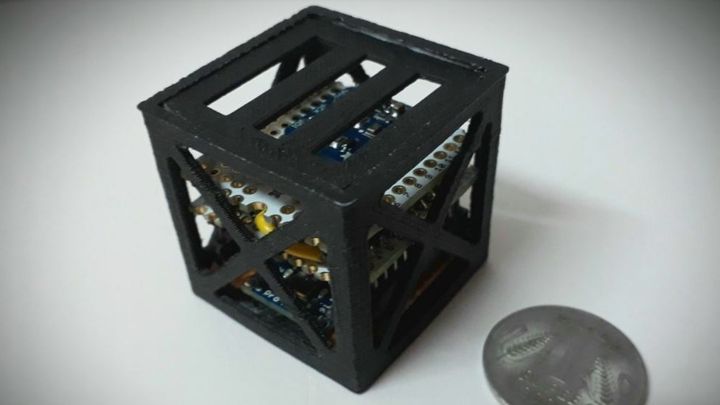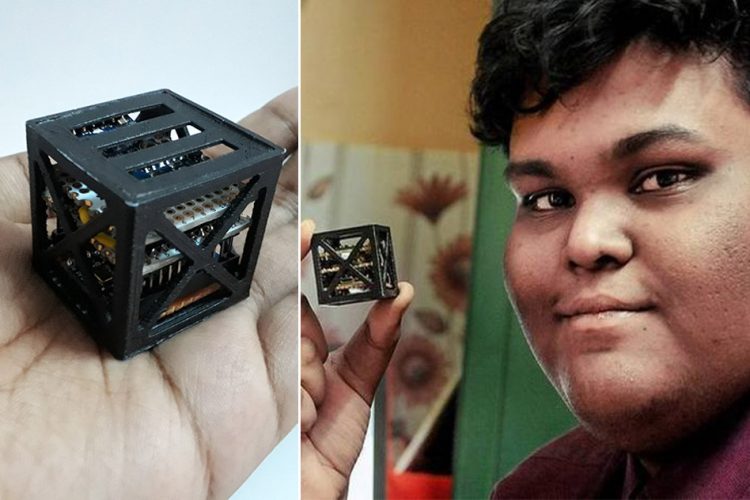18-year-old, Rifath Shaarook is no typical teen. While most boys his age are busy on the internet ‘googling’ stuff like ‘how to get a girlfriend’ alongside some nasty things in their browser history. Shaarook is busy doing ‘adult’ stuff, and not the x-rated kind. He is busy doing genius stuff, and now, he has possibly broken the Guinness Book of Records for having developed the lightest satellite in history.
The Indian teen has developed a satellite weighing just 64 grams (0.14 lb), and NASA is set to launch it into space come June this year. Shaarook became the winner in a youth design competition, and his satellite is set to go on a four-hour mission for a suborbital flight. During that flight, this lightweight satellite will operate for about 12 minutes within a microgravity environment in space.
Shaarook says his primary goal was to demonstrate the performance and limits of 3D printed carbon fiber. “We designed it completely from scratch. It will have a new kind of onboard computer and eight indigenous built-in sensors to measure acceleration, rotation, and the magnetosphere of the Earth.”
Shaarook christened his satellite KalamSat, after the former India President Abdul Kalam, who is said to have pioneered the first aeronautical science ambitions for the country. Sharook entered the Cubes in Space challenge that was organized by education company idoodle in partnership with NASA and the Colorado Space Grant Consortium.
Shaarook comes from the little town of Tamil Nadu, and thanks to his creation, he now works as a lead scientist at the Chennai-based Space Kidz India; a science and education facility for teens and kids in India.
Shaarook says that the KalamSat is not his first invention, at the age of 15, he came up with a helium weather balloon in a national competition for young scientists.



